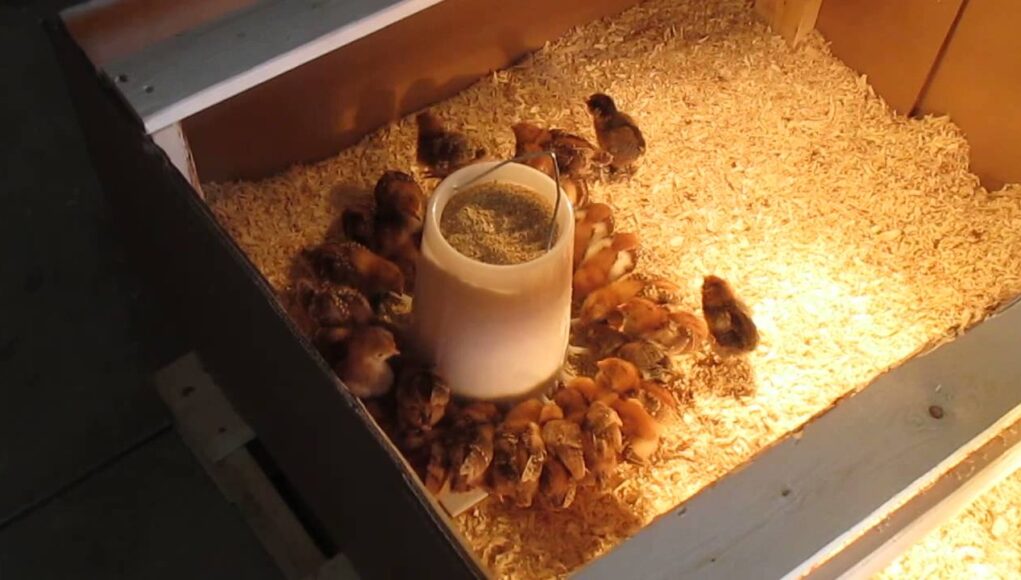Raising chicks can be an incredibly rewarding experience, especially when you take on the responsibility of hand-raising chicks in a brooder. This journey begins with understanding the unique needs of your chicks and providing them with the best possible start. Whether you’re a seasoned poultry keeper or a beginner, learning the essentials of brooding will ensure your chicks grow healthy and strong. In this article, we’ll explore everything you need to know about hand-raising chicks in a brooder, from setting up the brooder to ensuring they have the right nutrition.

Importance of a Brooder
A brooder is a critical component when it comes to raising chicks. It serves as a safe, warm environment where young chicks can thrive until they are ready to join the rest of the flock. The brooder replicates the warmth and protection that a mother hen provides, which is essential for the chicks’ survival and growth. Chick brooder designs can vary, but the fundamental purpose remains the same: to offer a secure and nurturing space for your chicks.
Setting Up Your Brooder
The first step in hand-raising chicks in a brooder is setting up the brooder itself. Here are some key considerations:
Choosing the Right Brooder
Brooders come in various shapes and sizes. You can choose from commercially available brooders or create a DIY version. Consider factors such as the number of chicks, available space, and your budget when selecting a brooder. Some people opt for space-saving designs, which can be particularly useful if you have limited room. Check out this space-saving chick brooder for some ideas.
Temperature Control
Keeping the brooder at the right temperature is crucial. Chicks need warmth to survive, and a heat lamp or heating plate can provide the necessary heat. The temperature should start at around 95F (35C) and gradually decrease by 5F each week until the chicks are fully feathered and can regulate their own body temperature.
Bedding and Cleanliness
Choose bedding that is absorbent and easy to clean. Pine shavings are a popular choice for many poultry keepers. Maintaining cleanliness is vital to prevent diseases. Regular cleaning and changing of bedding will help keep the environment healthy. Learn more about brooder maintenance.
Feeding Your Chicks
A balanced diet is essential for the healthy growth of your chicks. Start with high-quality chick starter feed, which provides the necessary nutrients. Ensure they have constant access to clean water. Introducing grit is important for their digestion once they start eating grains. For more information, see when to introduce grit in the brooder.
Monitoring Health and Growth
Regularly check your chicks for any signs of illness or distress. Healthy chicks are active and alert. Keep an eye out for any changes in behavior, as these can be early indicators of health issues. Weighing your chicks weekly can help monitor their growth and ensure they are developing as expected.
Socialization and Handling
Early socialization is beneficial for chicks, as it helps them become accustomed to human interaction. Handle them gently and frequently to build trust and reduce stress. This can also make future management tasks easier as they grow older.
Transitioning to the Coop
Once your chicks are fully feathered and the weather is suitable, they can be transitioned from the brooder to the coop. Gradually introduce them to the outdoor environment to help them acclimate. Ensure the coop is secure and predator-proof to keep your growing chickens safe.

FAQs
How long should chicks stay in the brooder?
Chicks typically stay in the brooder until they are about 6-8 weeks old, fully feathered, and the outdoor temperatures are appropriate for their age.
What temperature should the brooder be?
Start with a temperature of 95F (35C) and decrease it by 5F each week until the chicks are fully feathered and can maintain their own body temperature.
Can I raise different breeds together?
Yes, you can raise different breeds together in the same brooder. Just ensure they have similar growth rates and nutritional needs. For more information on mixed breed care, visit mixed flock care.
For more comprehensive information on brooding and caring for chicks, you can visit this external guide.
This article contains affiliate links. We may earn a commission at no extra cost to you.











